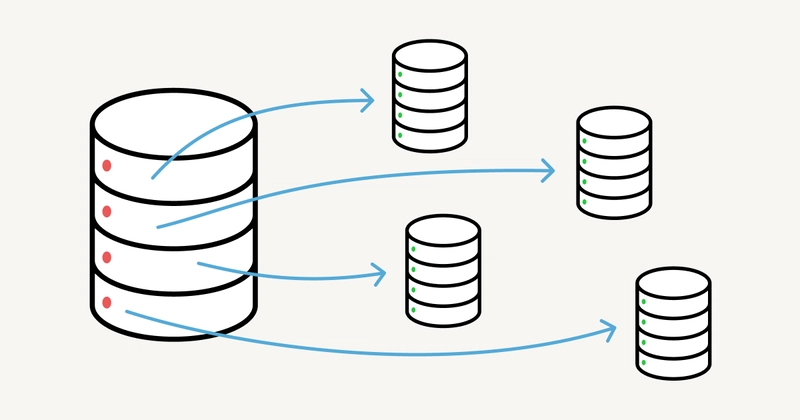This content originally appeared on DEV Community and was authored by Aadarsh Nagrath
Notion isn’t just a note-taking app—it’s a real-time, collaborative database masquerading as a minimalist UI. But how does it handle 200+ billion blocks (database entries) without buckling under pressure?
Let’s peel back the layers.
Notion’s Data Model: A Database in Disguise
Every action in Notion—typing text, toggling a checkbox—creates a block, stored as a row in PostgreSQL. Here’s the schema of a block:
CREATE TABLE blocks (
id UUID PRIMARY KEY,
type VARCHAR(50), -- 'paragraph', 'checkbox', etc.
parent_id UUID, -- Parent block (if nested)
workspace_id UUID, -- Critical for sharding
properties JSONB -- Flexible content storage
);
Fun Fact:
When you hit ↑ or ↓ in Notion, it’s not moving a cursor—it’s jumping between database rows. A "simple" page with 10 elements = 10+ database queries!
The Scaling Crisis: 20 Billion Blocks and Chaos
Why Postgres Almost Died
- Single database: Pre-2021, all blocks lived in one PostgreSQL instance.
- Indexes bloated: Querying a workspace’s blocks required scanning millions of rows.
- Writes stalled: Concurrent edits from 100M users? Good luck.
The Sharding Savior
Notion split data into 480 logical shards (32 machines × 15 shards each).
How?
-
Shard Key:
workspace_id(every block belongs to one workspace). - Routing: Application code directs queries like:
shard = hash(workspace_id) % 480 # Simple but effective
Pro Tip:
Sharding isn’t free. Cross-shard queries (e.g., global search) require fan-out—sending requests to all shards. Notion avoids this with Elasticsearch for search.
Zero-Downtime Migration: The Double-Write Dance
Migrating 20B+ blocks live? Notion’s 3-step playbook:
- Double Writes:
def save_block(block):
old_db.write(block) # Legacy database
new_sharded_db.write(block) # New shard
- Audit Logs: A Kafka stream recorded all changes for reconciliation.
-
The Big Cutover:
- 5-minute downtime to flip the switch.
- Dark reads compared old/new DB outputs silently.
Underrated Hack:
They used PostgreSQL’s logical replication to sync shards—no third-party tools needed.
Beyond Postgres: The Data Lake Pivot
Postgres is great for OLTP (transactions), but analytics? Not so much. Notion’s new pipeline:
graph LR
A[Postgres Shards] -->|CDC| B[Apache Kafka]
B --> C[Apache Spark]
C --> D[Amazon S3 Data Lake]
D --> E[Snowflake for Analytics]
Why?
- Cost: Snowflake charges per query; S3 is dirt-cheap storage.
- AI Ready: Unstructured data (e.g., page content) fuels Notion’s AI features.
Gotcha:
Snowflake hates updates. Notion’s update-heavy workload forced them to build custom tooling.
Open Source Gems in Notion’s Stack
- Apache Kafka: Handles 4M+ messages/sec during peak loads.
- pgbouncer: Connection pooling to avoid Postgres meltdowns.
- Apache Hudi: Manages change-data-capture (CDC) for the data lake.
Lesson:
Notion’s engineers prefer boring tech—Postgres over MongoDB, Kafka over proprietary queues.
The Future: What’s Next for Notion’s Stack?
- Edge Caching: Reduce latency for global users.
- Columnar Storage: For faster analytics (e.g., Apache Parquet).
- Vector Databases: To power AI features (semantic search, etc.).
Why This Matters for You
Even if you’re not building the next Notion, these principles apply:
-
Sharding: Plan it early. Use a clear key (like
workspace_id). - Data Lakes: Separate OLTP and analytics early.
- Open Source: Avoid vendor lock-in; Kafka/Postgres will outlive any SaaS.
Found this interesting ?
To follow me -
MY Github, Twitter
This content originally appeared on DEV Community and was authored by Aadarsh Nagrath
Aadarsh Nagrath | Sciencx (2025-03-26T20:19:51+00:00) How Notion Handles 200 Billion Notes Without Crashing: A Technical Deep Dive. Retrieved from https://www.scien.cx/2025/03/26/how-notion-handles-200-billion-notes-without-crashing-a-technical-deep-dive/
Please log in to upload a file.
There are no updates yet.
Click the Upload button above to add an update.

